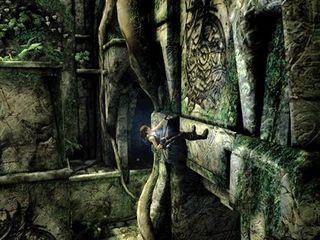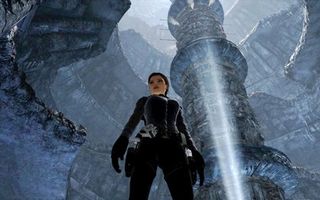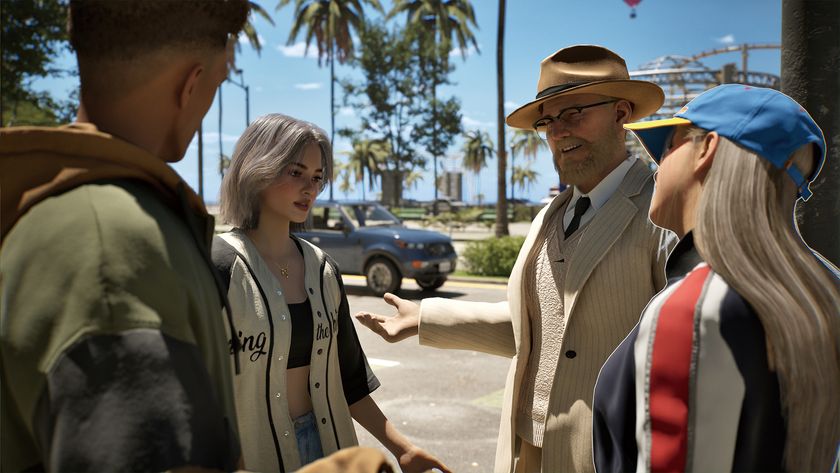12DOVE Verdict
Pros
- +
Epic scope
- +
Great level design
- +
Beautiful environments
Cons
- -
A bit on the short side
- -
Weak story
- -
Not the best combat
Why you can trust 12DOVE
Crystal Dynamics deserve acclaim, not just for having created their best Tomb Raider game so far, but for something even more remarkable: listening to criticism. They’ve taken on board the fact that their strength lies in epic puzzles and astonishing level architecture, and that their great weakness has been boss fights. Of the latter, Underworld contains an admirable none. The former constitutes the whole of the game. Crystal Dynamics’ first Lara outing was Legend, in which Lara’s backstory and motivations were explored, ending with the discovery that her mother might still be alive, trapped in Avalon. Along the way we learned of her feud with another tomb raider, Amanda. The cliffhanger ending of 2006 is where Underworld picks up.

Yet between the two games was Anniversary, the remake of the original Tomb Raider. Threads from that story are woven in too, such as winged Jacqueline Natla, former guard of Atlantis. This time around, Lara is seeking her mother via the eschatological myths of Hindu and Norse religions, and the recovery of Thor’s hammer. But if Underworld goes wrong anywhere, it’s in crapping this story out in such a mess that the convoluted history is as disposable as its muddled conclusion. Underworld is all about the jumping. Fortunately, the jumping is bloody brilliant. The key word for this game is ‘architecture’. Each of the five settings has behemoth buildings, with towering statues, immense chambers, and puzzles on a larger scale than ever seen before. Get the idea? It’s big.
Thailand’s astonishing Hindu site is a fantastic example. A gargantuan stone statue of Shiva looms over the ruins, balanced on the giant upturned body of Kali. Shiva’s arms are manipulated via enormous mechanisms in order to focus a single beam of light onto Kali’s forehead. But these mechanisms require components found in the echoing antechambers below, each a series of exploration puzzles and traps.
The upshot of all this is the complete abandonment of the tiresome Corridors of Death that have blighted the series. At no point in the entire game is there a spinning blade moving back and forth along a wall. Hallelujah! In fact, we can think of only three corridors throughout that contained any sort of moving obstacle, and each were perfunctory, making the connection between two chambers more interesting. Instead, Underworld is about entering a giant room and exploring the place.

While there is usually only one correct route, there’s always the sense that you discovered it for yourself, rather than that you were funneled into its inevitability. Also, many locations have multiple goals, solved in whichever order you choose, furthering the sense of freedom. Instead of being given new moves, this time you’re left to judiciously apply what Lara could already do: jump, swing, climb, grip and roll.
More info
| Genre | Action |
| Description | A nice transfer of the TR experience, except it's nearly impossible to see the action on screen, so expect to die a lot. |
| Franchise name | Tomb Raider |
| UK franchise name | Tomb Raider |
| Platform | "DS","Wii","PS2","Xbox 360","PS3","PC" |
| US censor rating | "Teen","Teen","Teen","Teen","Teen","Teen" |
| UK censor rating | "16+","16+","16+","16+","16+","16+" |
| Release date | 1 January 1970 (US), 1 January 1970 (UK) |

Inzoi dev says "highly inappropriate" bug that let you kill kids with your car has been patched out: "We are strengthening our internal review processes"

"30 years of history reside in our tape backups": PlayStation's building a game preservation mineshaft vault with 200 million files going back to a 1994 build of PS1 JRPG Arc the Lad

The other big Soulslike out this week has some Bloodborne and Dark Souls 3 in its combat, dev says, but "we would rather call AI Limit an action RPG"











